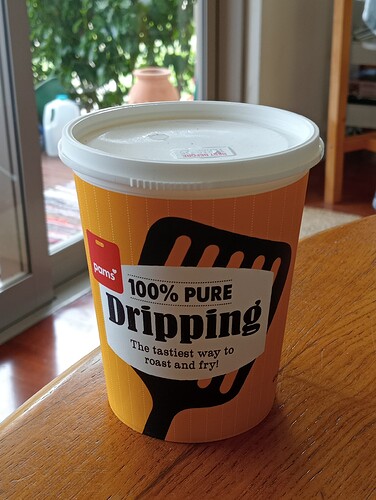If anybody read my post months ago describing how effective tallow has been for me as an edible lure, but couldn’t find any at the store, your problem may have been solved. On my last trip the store, I saw that Pans is selling pots of dripping, which is another term for tallow. A 454g pot was only $6.49 at Pak 'N Save, so it’s a very cheap lure to try. A pot that size will lure a lot of traps for a long time.
Spring and summer are excellent times to try dripping, because it has a stronger smell when it’s warm, having the scent of roast beef or lamb. The reason why peanut butter and walnuts are some of the best rat lures, is because they’re foods with a high fat content. It should come as no surprise, then, that a 100% fat lure has been so effective.
Mustelids
Given their inability to store fat, dripping should be the most attractive edible lure that trappers can use. Fresh and salted rabbit are the go-to mustelid lures, but rabbit flesh is lean. What mustelids hunting rabbits are mainly after is their fat-rich brains. Stoats and weasels are known to kill rabbits and only eat the brains.
A small piece of dripping inside a tunnel or inside the bait cup of a snap trap, are as close as the vast majority of trappers can get to using the real thing.
Coating
Dripping can be melted, which allows trappers to coat lures with fat. For example, pieces of Erayz can be dipped into a glass or pot containing warm dripping or it could be put on with a spoon on a flat surface. As it cools, dripping hardens and becomes brittle, unfortunately, so you won’t be able to completely coat a piece of Erayz with it. To those of you using it as a lure, I’d be astonished if dripping-coated Erayz didn’t increase your kill rates.
Rabbit Flesh
It stands to reason that fresh or salted rabbit would appeal even more to mustelids if dripping was used in conjunction with them. When a piece of fresh rabbit is on the verge of becoming too rotten to attract mustelids, the scent of fat might be enough to lure them inside a tunnel.
To trap shy individuals, the combination of rabbit flesh and fat may increase the odds of them interacting with a trap. A pre-feed of dripping would be very wise, as it might get them hooked on it.
Please feel free to ask questions and place feedback.
Good trapping!

